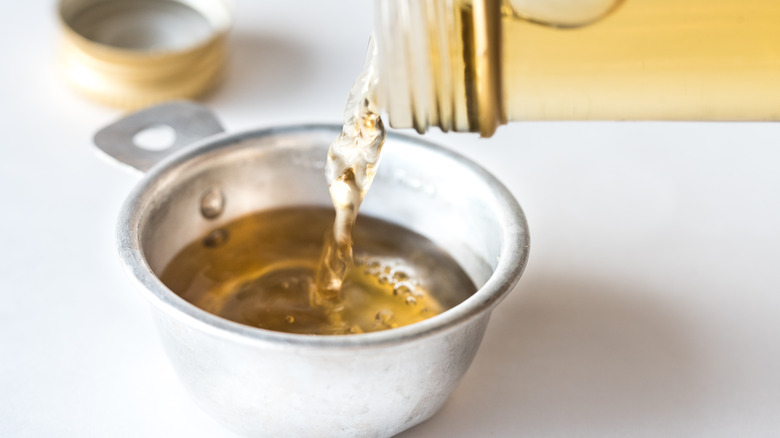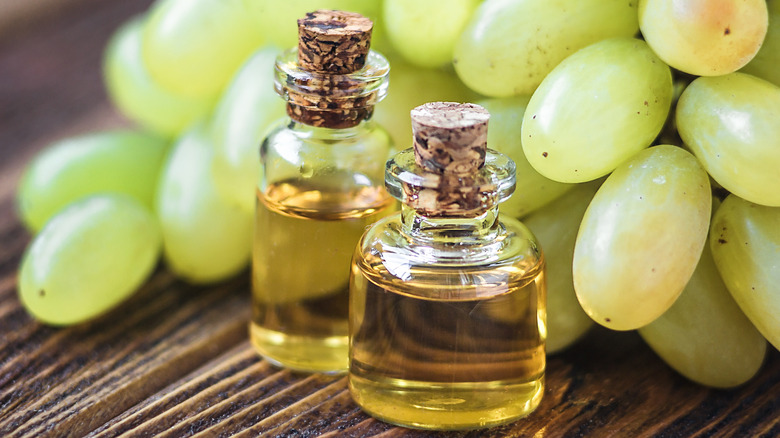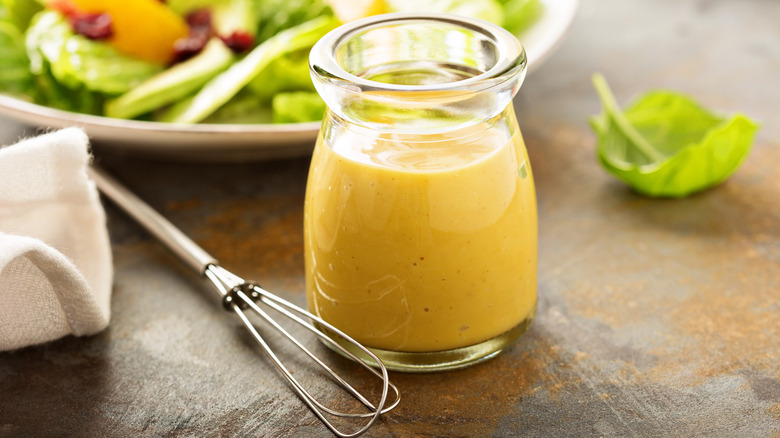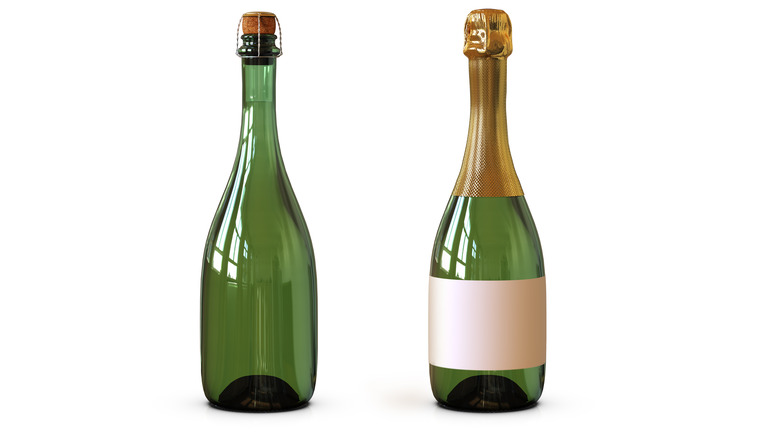What Is Champagne Vinegar And How Do You Use It?
When it comes to vinegar, it seems like the distilled white and apple cider varieties get all the love. Both kinds can be used in cooking and cleaning, and the latter has taken over as one of the latest health trends that some of the Kardashian sisters have even implemented into their daily routines. White wine vinegar and red wine vinegar are also fan favorites thanks to their respective bold and tangy flavors that work well in dressings, sauces, and marinades, as is balsamic vinegar for its sweet taste that shines in a Caprese salad.
But enough about those. We're here today to shed some light on one of the lesser-known members of the vinegar family that you should keep in your pantry to help take your recipes from drab to fab. That's right, we're talking about champagne vinegar, a direct descendant of the fancy libation that will add a mild and delightful acidity to some of your favorite meals.
What is champagne vinegar?
When you want to celebrate a big piece of news, you pop open a bottle of champagne, but there's no need to wait for a special occasion to bust out the champagne vinegar. This ingredient is a type of wine vinegar, though what sets it apart from the more common red and white wine varieties is that it made specifically from Chardonnay and Pinot Noir grapes — the same ones that are transformed into your favorite bottle of bubbly (via MasterClass).
According to Tastessence, the juice of these French-born fruits (a.k.a. champagne) is combined with a type of bacteria known as Acetobacter aceti to transform the ethanol in the base product into acetic acid, which is what gives vinegar the tangy and acidic taste that we often use it for. The concoction is typically left to age in oak barrels for a year or two to deepen its flavor until it is bottled up for sale.
When scanning the shelves for this product, you'll know you've landed on it when you see a liquid that is similar in consistency to water and has a pale gold color. However, don't go grabbing the first bottle you see — Tastessence advises avoiding containers that have no mention of the product's source grapes on their labels.
What does champagne vinegar taste like, and how can it be used?
All vinegars pack a pungent and flavorful punch, but champagne vinegar tends to fall on the lighter side of the scale. It has a delicate taste that is often described as being fruity and floral with a slight hint of vanilla. Therefore, it will still add some acidity to your food without overpowering the meal.
The milder flavor of champagne vinegar does make an impact on how it should be used. Per MasterClass, this acidic ingredient is best utilized as a "supporting player" in recipes rather than the main star. It can be used for marinades and sauces like hollandaise and homemade mayonnaise, and makes a great pickling liquid as well. However, champagne vinegar does some of its best work when combined with a few other simple ingredients like olive oil, lemon, garlic, and spices to make a delicious vinaigrette for salads. It can also be used as an easy substitution for white wine vinegar or red wine vinegar if needed, though you will likely have to add a bit more than what is originally called for to get a better flavor match.
How to make homemade champagne vinegar
Champagne vinegar isn't exactly a pantry staple, but that's not because it is difficult to find — the ingredient can usually be purchased at your local grocery store. However, Food Champs notes that a single bottle of it can be a bit pricey, making it less of a necessity than some of the other types of vinegar that can work just as well in your recipes without breaking the bank.
Fortunately, if it's the elegant flavor of champagne vinegar you're craving in your next salad, there is a simple way to make up a batch of the stuff at home. All you need to do is pour some champagne into a widemouthed jar and cover it with a few layers of cheesecloth so it can oxidize without allowing any dust or bacteria to get into the mixture (via Instructables). Store it in a dark and cool spot and in six short months, you'll have a jar of champagne vinegar ready to use for your next homemade salad dressing. No need to grab a fresh bottle of bubbly for this recipe either, as The Kitchn says that you can use flat champagne that may have been (accidentally) left out the night before. Avoiding waste while also saving a few bucks by not having to buy an expensive bottle of champagne vinegar from the store? Sounds good to us!



